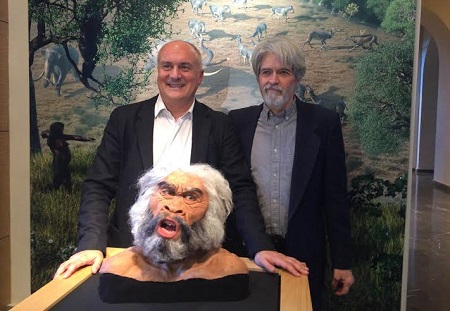Dmanisi skull reconstruction: What did humans look like 1.8 million years ago?

Do you want to know what human beings looked like 1.8 million years ago?
If yes, then you should go to a presentation of a hominin bust created by a famous American paleo-artist based on an ancient skull found in Dmanisi, southern Georgia.
The presentation of John Anthony Gurche’s work will take place at Simon Janashia Museum of Georgia, located at 3 Shota Rustaveli Ave in central Tbilisi at 4pm today.
The bust was based on the fifth ancient human skull found in Dmanisi. The area was home to the oldest Europeans; during excavations archaeologists found the oldest European skeleton remains in Dmanisi.
The bust represented precise scientific reconstruction of the humans who lived 1.8 million years ago. The brain volume of the fifth Dmanisi skull was the smallest (546 cm3) compared to other skulls discovered in Dmanisi. It was approximately one third the size of the modern human brain. It had a large, protruded face and big teeth. This sample was the only perfectly preserved skull of an adult individual, which allowed scientists to conduct comprehensive research.
A unique collection of skulls from Dmanisi allowed scientists to observe and study the population dating back 1.8 million years. Dmanisi discoveries were ranked third among the world’s top 10.
Gurche, who worked on the bust's creation, was famous for reconstructing exponents with great scientific accuracy and a high degree of realism that transport viewers in time. His award winning work can be seen at a number of international museums. His work on the reconstruction of human ancestors has been featured in many television documentaries and Steven Spielberg's massive blockbuster Jurassic Park.
Today’s presentation is part of the International Science and Innovation Week 2015.
 Tweet
Tweet  Share
Share